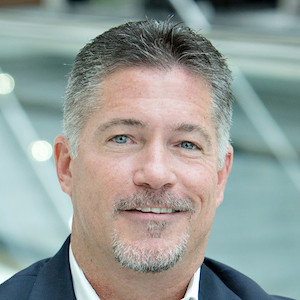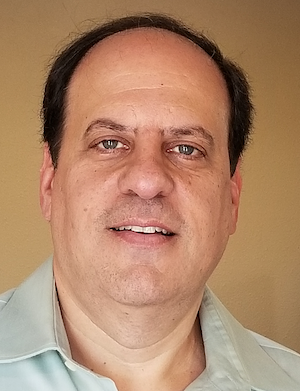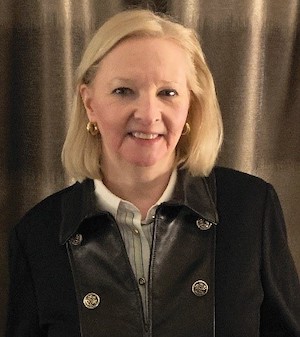 In the first article in this series, "Is open source a development model, business model, or something else?" I introduced the concept that open source is part of the supply chain for software products. But to truly understand open source as a supply chain, you must have a decent understanding of what a product is. A product can be thought of as a business, and as legendary business guru Peter Drucker said, "The purpose of business is to create and keep a customer." Drucker's statement means a business or product must be useful enough to pay for, or it will fail. Product differentiation is the thing that creates and retains customers.
In the first article in this series, "Is open source a development model, business model, or something else?" I introduced the concept that open source is part of the supply chain for software products. But to truly understand open source as a supply chain, you must have a decent understanding of what a product is. A product can be thought of as a business, and as legendary business guru Peter Drucker said, "The purpose of business is to create and keep a customer." Drucker's statement means a business or product must be useful enough to pay for, or it will fail. Product differentiation is the thing that creates and retains customers.
Feature Articles
Resilience must be Blind to the Catalyst - Part I
 On October 29 William Stemper, Forbes Councils Member put forth a thoughtful piece titled Three Steps To Building Resilience Through Technology.The article goes a long ways towards solidifying why resilience has a more urgent place in our businesses. I commend the article to the readers of this post. While Mr. Stemper focuses primarily on technology at his job at Comcast, he tees up some further, more holistic insights. Read More »
On October 29 William Stemper, Forbes Councils Member put forth a thoughtful piece titled Three Steps To Building Resilience Through Technology.The article goes a long ways towards solidifying why resilience has a more urgent place in our businesses. I commend the article to the readers of this post. While Mr. Stemper focuses primarily on technology at his job at Comcast, he tees up some further, more holistic insights. Read More »
The Ransomware Attacks on Hospitals Are (Cyber) Criminal
 One of the redeeming aspects of crises is that, amidst all the confusion, suffering, and loss, there are usually moments of grace, of humans showing their best nature... Unfortunately, crises also tend to bring out the worst of our natures... And then there are the cyberattacks. Last week the federal Cybersecurity & Infrastructure Security Agency, the FBI, and HHS issued a joint alert Ransomware Activity Targeting the Healthcare and Public Health Sector, warning that they have "credible information of an increased and imminent cybercrime threat to U.S. hospitals and healthcare providers." I'll spare you the technical details of the expected attack strategies or suggested mitigation efforts, but I will note that they warned: "CISA, FBI, and HHS do not recommend paying ransom." Read More »
One of the redeeming aspects of crises is that, amidst all the confusion, suffering, and loss, there are usually moments of grace, of humans showing their best nature... Unfortunately, crises also tend to bring out the worst of our natures... And then there are the cyberattacks. Last week the federal Cybersecurity & Infrastructure Security Agency, the FBI, and HHS issued a joint alert Ransomware Activity Targeting the Healthcare and Public Health Sector, warning that they have "credible information of an increased and imminent cybercrime threat to U.S. hospitals and healthcare providers." I'll spare you the technical details of the expected attack strategies or suggested mitigation efforts, but I will note that they warned: "CISA, FBI, and HHS do not recommend paying ransom." Read More »
How To Define A Product In The Open Source Software Supply Chain
Is Open Source A Development Model, Business Model, Or Something Else?
 The OSD gives a clear definition of what open source software is, but doesn't provide much insight into how the adoption of open source affects a company's ability to build and deliver products or services that people want and need. Stated another way, there's still tremendous debate about the best ways to build a business based on open source. In this first of a multi-part series, I will lay the groundwork for understanding what products are, what product managers do, and how open source can be considered a supply chain. In future articles, I will go deeper into each of these topics, but I'll start by dissecting some common, but fundamentally confusing vocabulary.
The OSD gives a clear definition of what open source software is, but doesn't provide much insight into how the adoption of open source affects a company's ability to build and deliver products or services that people want and need. Stated another way, there's still tremendous debate about the best ways to build a business based on open source. In this first of a multi-part series, I will lay the groundwork for understanding what products are, what product managers do, and how open source can be considered a supply chain. In future articles, I will go deeper into each of these topics, but I'll start by dissecting some common, but fundamentally confusing vocabulary.
Open Source Tools Provide An Economic Advantage For Science
 Free and open source software (FOSS) and the distributed digital manufacturing of free and open source hardware (FOSH) have shown great promise for developing custom scientific tools. For some time now, FOSH has provided scientists a high return on investment. In fact, my previous research in the Open Source Labreported substantial economic savings from using these technologies. However, the open source design paradigm has since grown by orders of magnitude; now, there are examples of open source technology for science in the vast majority of disciplines, and several resources, including the Journal of Open Hardware, are dedicated to publishing them.
Free and open source software (FOSS) and the distributed digital manufacturing of free and open source hardware (FOSH) have shown great promise for developing custom scientific tools. For some time now, FOSH has provided scientists a high return on investment. In fact, my previous research in the Open Source Labreported substantial economic savings from using these technologies. However, the open source design paradigm has since grown by orders of magnitude; now, there are examples of open source technology for science in the vast majority of disciplines, and several resources, including the Journal of Open Hardware, are dedicated to publishing them.
Data Management for Large-scale COVID-19 Immunization: This is all not as simple as it seems
 There is a global race for the development of a vaccine for the SARS-CoV-2 virus that causes COVID-19. Finding a vaccine that works and receives approval is only part of the process. There are a series of other steps that need to be taken so that the vaccine can be delivered. These include the mass production of the vaccine, shipment, administration and record-keeping. This may be even more complex as there may be several vaccines. In this article we review some of these issues with a particular focus on the United States.
There is a global race for the development of a vaccine for the SARS-CoV-2 virus that causes COVID-19. Finding a vaccine that works and receives approval is only part of the process. There are a series of other steps that need to be taken so that the vaccine can be delivered. These include the mass production of the vaccine, shipment, administration and record-keeping. This may be even more complex as there may be several vaccines. In this article we review some of these issues with a particular focus on the United States.
How Breaking My Back Led Me To Open Source
 Open source gave a voice and a community to someone coping with the aftermath of a major injury, and eventually led to a new career...Breaking my back was a pivotal experience on many fronts. It scared the hell out of me. But the road to recovery helped me become a more resilient, courageous, and patient human being. Interestingly, it was this incident that also led me to the world of open source. Living with chronic pain is lonely, but I found my voice and a community via WordPress. Now, nearly eight years later, I'm working for the number one open source company in the world.
Open source gave a voice and a community to someone coping with the aftermath of a major injury, and eventually led to a new career...Breaking my back was a pivotal experience on many fronts. It scared the hell out of me. But the road to recovery helped me become a more resilient, courageous, and patient human being. Interestingly, it was this incident that also led me to the world of open source. Living with chronic pain is lonely, but I found my voice and a community via WordPress. Now, nearly eight years later, I'm working for the number one open source company in the world.
Report on ONC’s Working Session on Patient Identity and Matching
 On Monday, August 31, I attended the final Working Session on Patient Identity and Matching. This virtual event was hosted by the Office of the National Coordinator for Health IT (ONC). This Working Session was a followup to an earlier session back in June 2020. The event last week had over 300 attendees and covered a wide range of topics and technologies related to patient identity and matching. These ONC Working Sessions are being driven by requirements that are part of the 21st Century Cures Act as well as a Congressional request from December 2019 to continue to "...evaluate the effectiveness of current [patient identity and matching] methods and recommend actions that increase the likelihood of an accurate match of patients to their health care data." Much of the focus of this study has been on whether a national patient identifier should be implemented in the US.
On Monday, August 31, I attended the final Working Session on Patient Identity and Matching. This virtual event was hosted by the Office of the National Coordinator for Health IT (ONC). This Working Session was a followup to an earlier session back in June 2020. The event last week had over 300 attendees and covered a wide range of topics and technologies related to patient identity and matching. These ONC Working Sessions are being driven by requirements that are part of the 21st Century Cures Act as well as a Congressional request from December 2019 to continue to "...evaluate the effectiveness of current [patient identity and matching] methods and recommend actions that increase the likelihood of an accurate match of patients to their health care data." Much of the focus of this study has been on whether a national patient identifier should be implemented in the US.
The Strengths and Weaknesses of the HL7 FHIR Messaging Standard
 It has been several years since we reviewed the progress of the HL7 FHIR standards adoption rate. Health Level Seven's (HL7) Fast Healthcare Interoperability Resources (FHIR) is an emerging standard that has rapidly captured the mind-share of the Health Information Technology (HIT) standards community. FHIR is a standard that enables healthcare data sharing between systems in a manner that is more easily implemented and more expressive than previous HL7 standards such as HL7 Version 2, 3 and Clinical Document Architecture (CDA). Regardless of the version of HL7 standard used, the purpose of these standards is to send clinical data in messages, whether to a party inside or outside your organization. HL7 devises flexible message formats so the receiver of the message can open it up, know who sent it and why, and break it down into understandable segments and data fields.
It has been several years since we reviewed the progress of the HL7 FHIR standards adoption rate. Health Level Seven's (HL7) Fast Healthcare Interoperability Resources (FHIR) is an emerging standard that has rapidly captured the mind-share of the Health Information Technology (HIT) standards community. FHIR is a standard that enables healthcare data sharing between systems in a manner that is more easily implemented and more expressive than previous HL7 standards such as HL7 Version 2, 3 and Clinical Document Architecture (CDA). Regardless of the version of HL7 standard used, the purpose of these standards is to send clinical data in messages, whether to a party inside or outside your organization. HL7 devises flexible message formats so the receiver of the message can open it up, know who sent it and why, and break it down into understandable segments and data fields.
The Wrong Legacies of Health Information Technology
 I read two articles this week that got me thinking, Robert Charette's "Inside the Hidden World of Legacy IT Systems" (IEEE Spectrum) and Douglas Holt's "Cultural Innovation" (Harvard Business Review). Both deal with what I'll call legacy thinking. It's a particular problem for healthcare...If you are in healthcare and rely on legacy systems, you're in trouble. If you are in healthcare and are not acutely aware of what your Achilles heel is, someone else is going to exploit it. Even if you are a new healthcare entrant with more modern technologies but still based on the current ideology, your impact is going to be limited.
I read two articles this week that got me thinking, Robert Charette's "Inside the Hidden World of Legacy IT Systems" (IEEE Spectrum) and Douglas Holt's "Cultural Innovation" (Harvard Business Review). Both deal with what I'll call legacy thinking. It's a particular problem for healthcare...If you are in healthcare and rely on legacy systems, you're in trouble. If you are in healthcare and are not acutely aware of what your Achilles heel is, someone else is going to exploit it. Even if you are a new healthcare entrant with more modern technologies but still based on the current ideology, your impact is going to be limited.
Extreme Wildfires Can Create Their Own Dangerous Weather, Including Fire Tornadoes - Here's How
 It might sound like a bad movie, but extreme wildfires can create their own weather - including fire tornadoes. It happened in California as a heat wave helped to fuel hundreds of wildfires across the region, many of them sparked by lightning. One fiery funnel cloud on Aug. 15 was so powerful, the National Weather Service issued what's believed to be its first fire tornado warning. So, what has to happen for a wildfire to get so extreme that it spins off tornadoes? As professors who study wildfires and weather, we can offer some insights.
It might sound like a bad movie, but extreme wildfires can create their own weather - including fire tornadoes. It happened in California as a heat wave helped to fuel hundreds of wildfires across the region, many of them sparked by lightning. One fiery funnel cloud on Aug. 15 was so powerful, the National Weather Service issued what's believed to be its first fire tornado warning. So, what has to happen for a wildfire to get so extreme that it spins off tornadoes? As professors who study wildfires and weather, we can offer some insights.
Approval Of A Coronavirus Vaccine Would Be Just The Beginning - Huge Production Challenges Could Cause Long Delays
 The race for a SARS-CoV-2 vaccine is well underway. It's tempting to assume that once the first vaccine is approved for human use, all the problems of this pandemic will be immediately solved. Unfortunately, that is not exactly the case. Developing a new vaccine is only the first part of the complex journey that's supposed to end with a return to some sort of normal life. Producing hundreds of millions of vaccines for the U.S. - and billions for the world as a whole - will be no small feat. There are many technical and economic challenges that will need to be overcome somehow to produce millions of vaccines as fast as possible.
The race for a SARS-CoV-2 vaccine is well underway. It's tempting to assume that once the first vaccine is approved for human use, all the problems of this pandemic will be immediately solved. Unfortunately, that is not exactly the case. Developing a new vaccine is only the first part of the complex journey that's supposed to end with a return to some sort of normal life. Producing hundreds of millions of vaccines for the U.S. - and billions for the world as a whole - will be no small feat. There are many technical and economic challenges that will need to be overcome somehow to produce millions of vaccines as fast as possible.
ONC Tech Forum 2020—An Attendee's Perspective
 I attended the ONC summer Tech Forum in August 2020 which brought together over 1,500 industry experts and Federal partners to discuss technical innovations in health information technology and their potential impacts on the healthcare ecosystem...One of the most interesting parts of the conversation was focused on the efforts made by Honk Kong to develop an open source digital health platform. Over the past 20+ years, Hong Kong has been pursuing a "one system, one record" policy primarily built on open source components. Though they had little money to invest at the beginning, for them open source is more about retaining control than about controlling cost (though the lower price tag certainly got them started down this path)...
I attended the ONC summer Tech Forum in August 2020 which brought together over 1,500 industry experts and Federal partners to discuss technical innovations in health information technology and their potential impacts on the healthcare ecosystem...One of the most interesting parts of the conversation was focused on the efforts made by Honk Kong to develop an open source digital health platform. Over the past 20+ years, Hong Kong has been pursuing a "one system, one record" policy primarily built on open source components. Though they had little money to invest at the beginning, for them open source is more about retaining control than about controlling cost (though the lower price tag certainly got them started down this path)...
An Epic Fight For the Metaverse—Fortnite Takes on the Big Tech Oligopolies
 You might have missed it amongst all the headlines about the U.S.P.S., the 2020 elections, and, of course, that little thing we call the pandemic, but Fortnite got kicked off Apple's App Store (and subsequently Google Play). I'm not a gamer, but I am fascinated by gaming, because, as Steven Johnson put it, "The Future is where people are having the most fun." Tim Sweeney, the founder and CEO of Epic Games, Inc., which makes Fortnite, seems to be having a lot of fun. And he thinks the future is the Metaverse. Healthcare, take note. The tech giants were reacting to Epic allowing "permanent discounts" on developer fees for in-game purchases made directly, rather than going through Apple or Google. Developers thus avoid the 30% commission charged in those Stores. Mr. Sweeney has been railing about the commission level for some time, leading to the recent decision.
You might have missed it amongst all the headlines about the U.S.P.S., the 2020 elections, and, of course, that little thing we call the pandemic, but Fortnite got kicked off Apple's App Store (and subsequently Google Play). I'm not a gamer, but I am fascinated by gaming, because, as Steven Johnson put it, "The Future is where people are having the most fun." Tim Sweeney, the founder and CEO of Epic Games, Inc., which makes Fortnite, seems to be having a lot of fun. And he thinks the future is the Metaverse. Healthcare, take note. The tech giants were reacting to Epic allowing "permanent discounts" on developer fees for in-game purchases made directly, rather than going through Apple or Google. Developers thus avoid the 30% commission charged in those Stores. Mr. Sweeney has been railing about the commission level for some time, leading to the recent decision.
An Android Operating System That Prioritizes Mobile Data Privacy
 Android and iOS devices are notorious for uploading your personal data to their cloud services without your permission. If you are concerned about your mobile data privacy, you have another option to consider for your next smartphone: the /e/ operating system, a free and open source, Android-based operating system. The eFoundation community is led by Gaël Duval, a legacy Linux developer and entrepreneur who founded Mandrake Linux in 1998.
Android and iOS devices are notorious for uploading your personal data to their cloud services without your permission. If you are concerned about your mobile data privacy, you have another option to consider for your next smartphone: the /e/ operating system, a free and open source, Android-based operating system. The eFoundation community is led by Gaël Duval, a legacy Linux developer and entrepreneur who founded Mandrake Linux in 1998.